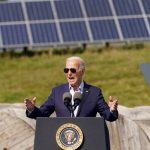In a report published this Monday, the Economic Commission for Latin America and the Caribbean (ECLAC) points out that in 2022, 224,579 million dollars of foreign investment entered the region. This figure is 55.2% higher than that reached in 2021 and the maximum value since records have been kept.
In addition, the weight of these flows in regional GDP also increased in 2022, reaching 4.0%.
According to the agency, these figures are a consequence of the increase in investment in some countries, particularly in Brazil, where they were due to the growth in the reinvestment of profits and the increase in investment in the service sector.
The document Foreign Direct Investment in Latin America and the Caribbean 2023 notes that while these figures are consistent with the post-pandemic recovery, it is unclear whether it will remain at similar levels in 2023.
“The challenge of attracting and retaining direct foreign investment that effectively contributes to the sustainable and inclusive productive development of the region is still more relevant than ever. There are new opportunities in an era of reconfiguration of global value chains and the geographic relocation of production in the face of a changing globalization,” said ECLAC’s executive secretary.
José Manuel Salazar-Xirinachs emphasized that “the challenge is not only to attract and retain, but also to maximize the contribution of this investment to development, and for this, countries must pay attention to post-establishment productive development policies, which include promoting production chains, value addition and promotion policies in value chains, development of human resources, infrastructure and logistics, and construction of local capacities”.
Investments by countries
According to the report, almost all the countries of Latin America and the Caribbean received more investment foreign direct in 2022. The list is led by Brazil (which received 41% of the regional total and is the fifth world destination for these flows, followed by Mexico (17%), Chile (9%), Colombia (8%), Argentina (7%) and Peru (5%).
In Central America, Costa Rica was the main recipient of foreign direct investment; in Guatemala these flows recorded a significant drop due to an extraordinary value in 2021, but returned to their historical average.
The variation in inflows was also positive in the Caribbean, driven mainly by higher investment in the Dominican Republic, which was the second largest recipient country after Guyana.
At regional level, 54% of foreign direct investment entered the service sector, although both the manufacturing and natural resources sectors rebounded. Investments in financial services; electricity, gas and water; information and communications; and transportation-related services had the largest share in the services category.
Main investors
ECLAC points to the United States (38% of the total) and the European Union (17%, excluding the Netherlands and Luxembourg) as the main investors in the region. On the other hand, investment from countries in the Latin American and Caribbean region itself experienced a significant increase, going from 9% to 14% of the total.
In addition, the report finds a increase of more than 80% in foreign direct investment from Latin America and the Caribbean to the same region or other destinations. In 2022, the amount invested abroad by Latin American transnational companies, known as trans-Latinas, reached historic levels: 74,677 million dollars, being the highest figure recorded since it began to be compiled in the 1990s.
The energy transition is key
On the other hand, the amount of foreign direct investment project announcements in Latin America and the Caribbean grew by 93% in 2022, totaling close to 100,000 million dollars. For the first time since 2010, the hydrocarbons sector (coal, oil and gas) led the ads, with 24% of the total, followed by the automotive sector (13%) and renewable energy (11%).
The study also includes two chapters that analyze FDI trends in non-renewable and renewable energies in the context of the energy transition and compliance with the Sustainable Development Goals. In them it is discussed the key role of governments in this matter, challenges and opportunities are identified and recommendations are made.
ECLAC qualifies the energy transition as one of the sectors that can become a great engine of the productive transformation of the region, for which the countries and their territories should prioritize it within the framework of their development policies and agendas.
Specifically, the percentage of installed capacity (production potential) of renewable energy in Latin America and the Caribbean is higher than the world average, and the matrix (origin) of electricity generation is one of the cleanest in the world. The agency considers that, if it increases its supply of renewable energy, the region could become the origin of the production of goods that today are produced in countries with relatively less clean matrixes.
Thus, foreign direct investment can play a fundamental role in accelerate the energy transition and promote the use of emerging technologies.









